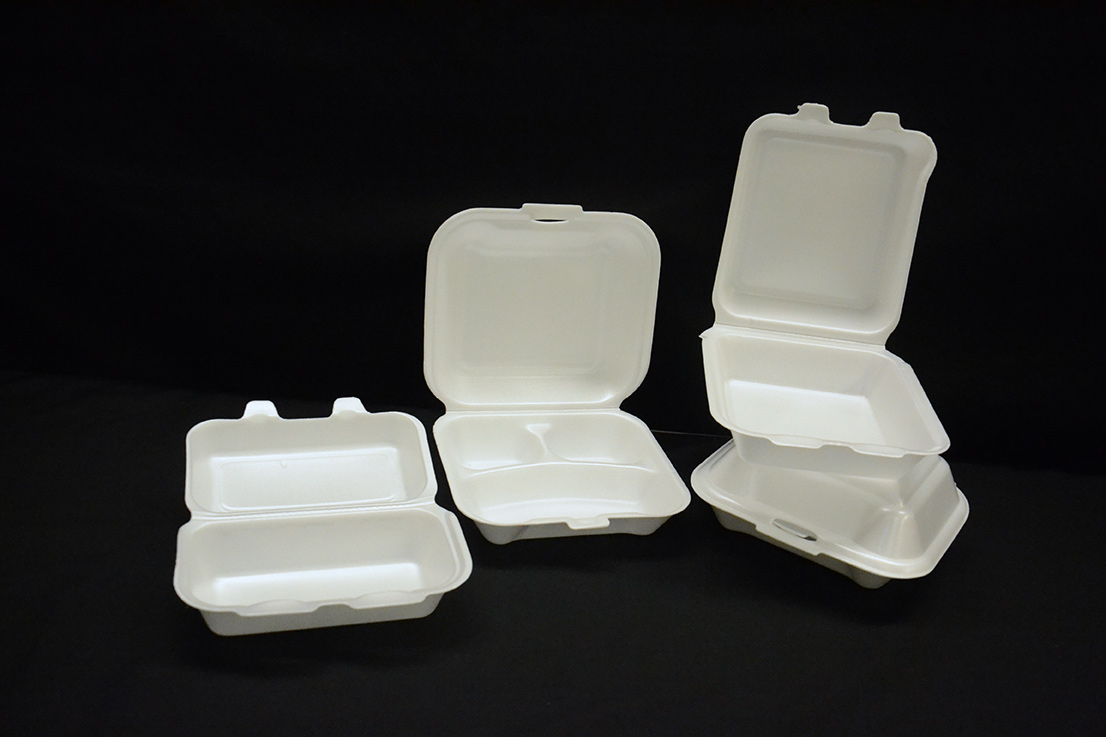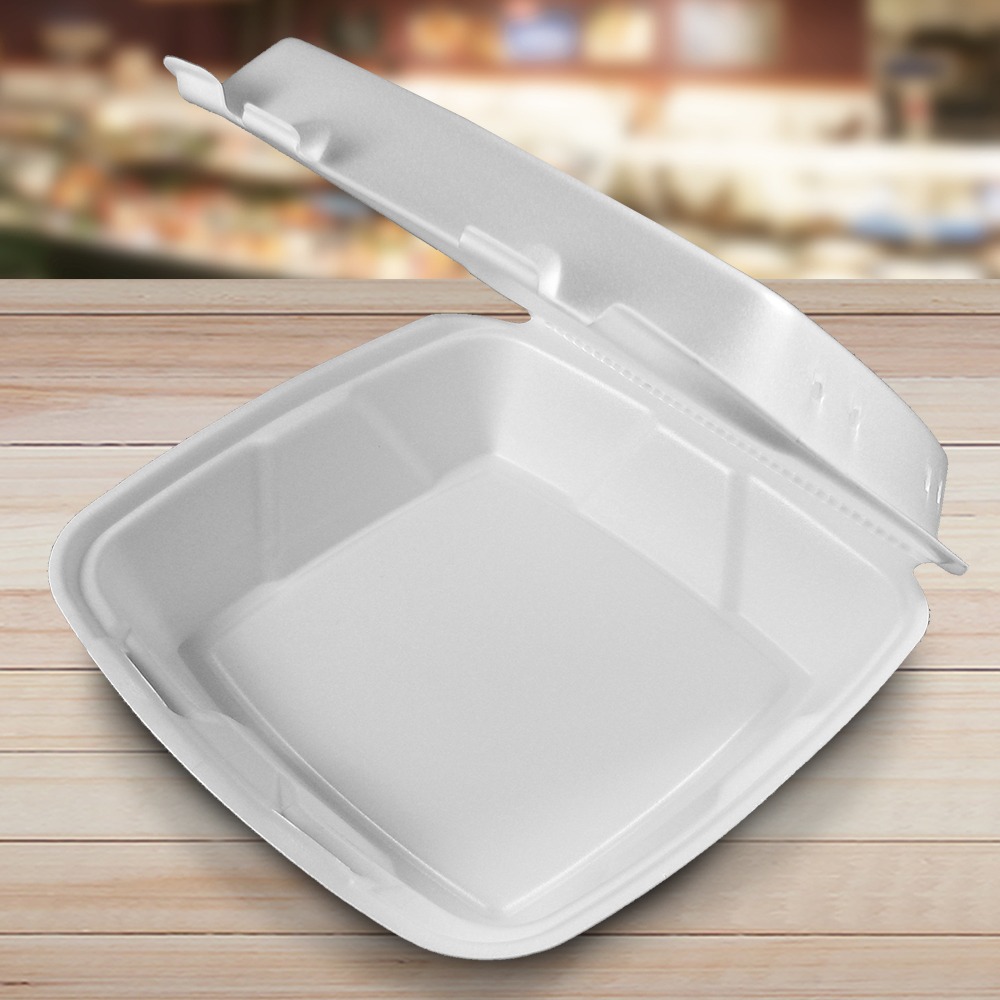Styrofoam food containers, a ubiquitous presence in our daily lives, have come under scrutiny for their environmental and health implications. Delve into this comprehensive exploration of the concerns surrounding styrofoam, its potential risks, and the promising alternatives available.
From landfills to marine ecosystems, the environmental impact of styrofoam is undeniable. Health concerns, including the potential leaching of styrene into food and beverages, raise further questions about its safety. However, innovative alternatives offer hope for a more sustainable future.
Environmental Impact
The environmental concerns associated with styrofoam food containers stem from their slow decomposition rate and the harmful effects they have on ecosystems.
Styrofoam, also known as polystyrene, is a synthetic material that is resistant to degradation. It can take hundreds of years to break down, accumulating in landfills and polluting the environment.
Impact on Landfills
- Styrofoam’s slow decomposition rate contributes to landfill overcrowding and the depletion of valuable landfill space.
- Its lightweight nature makes it easily transported by wind, resulting in litter and unsightly landscapes.
Impact on Marine Ecosystems
- Styrofoam often ends up in waterways and oceans, where it can be ingested by marine life, causing harm or even death.
- Its lightweight and buoyant nature allows it to float on water, posing a navigation hazard for boats and ships.
- Styrofoam fragments can accumulate in marine food chains, potentially leading to the transfer of harmful chemicals to humans.
Health Concerns
Styrofoam food containers pose potential health risks due to their chemical composition and the potential for styrene leaching into food and beverages. Understanding these risks is crucial for informed decision-making.
Styrofoam, also known as polystyrene, is a synthetic polymer composed primarily of styrene monomer units. Styrene has been classified as a possible human carcinogen by the International Agency for Research on Cancer (IARC), raising concerns about its potential health effects.
Styrene Leaching
One of the primary health concerns with styrofoam food containers is the potential for styrene to leach into food and beverages. Styrene can migrate from the container into the contents, especially when exposed to heat or acidic substances. Studies have shown that styrene levels in food and beverages stored in styrofoam containers can exceed safety limits.
Consuming styrene-contaminated food or beverages has been linked to a range of health issues, including:
- Neurological effects: Styrene can affect the central nervous system, causing headaches, dizziness, and fatigue.
- Reproductive toxicity: Styrene has been associated with reproductive problems in both animals and humans.
- Developmental toxicity: Styrene exposure during pregnancy may lead to developmental abnormalities in the fetus.
- Cancer risk: Styrene is classified as a possible human carcinogen, and long-term exposure may increase the risk of certain types of cancer.
Alternatives to Styrofoam

Styrofoam has several detrimental effects on the environment and human health. As a result, there is a growing need for sustainable alternatives to styrofoam food containers. These alternatives offer several environmental and health benefits and present challenges and opportunities in transitioning to a more sustainable future.
Plant-Based Materials
Plant-based materials, such as bamboo, sugarcane, and corn starch, are biodegradable and compostable, reducing waste accumulation in landfills and oceans. They also have a lower carbon footprint during production compared to styrofoam. However, plant-based containers may not be as durable or heat-resistant as styrofoam, and their availability and cost can vary depending on the region.
Recyclable Plastics
Recyclable plastics, such as polyethylene terephthalate (PET) and polypropylene (PP), can be reused and recycled multiple times, reducing plastic waste. They are also lightweight and durable, making them suitable for food packaging. However, the recycling process can be energy-intensive, and the availability of recycling facilities can vary.
Edible Materials, Styrofoam food containers
Edible materials, such as seaweed and plant leaves, can be used to create food containers that are entirely consumed with the food. This eliminates waste and provides additional nutritional value. However, edible containers may not be suitable for all types of food and may have a shorter shelf life.
Challenges and Opportunities
Transitioning to sustainable alternatives to styrofoam presents both challenges and opportunities. Challenges include the higher cost of some alternatives, the need for consumer education and acceptance, and the development of infrastructure for recycling and composting. Opportunities include the potential for job creation in the sustainable packaging industry, the reduction of environmental pollution, and the promotion of a more circular economy.By
addressing these challenges and embracing the opportunities, we can create a more sustainable future where food containers are environmentally friendly and pose no threat to human health.
Regulations and Bans

Governments worldwide have implemented regulations and bans on styrofoam food containers to address environmental and health concerns. These measures aim to reduce the negative impacts of styrofoam on ecosystems and human well-being.
Bans on styrofoam food containers have been enacted in several countries, including the United Kingdom, France, and Canada. In the United States, some cities and states have implemented bans or restrictions on the use of styrofoam food containers. For instance, San Francisco became the first major U.S.
city to ban styrofoam food containers in 2016.
Motivations Behind Regulations and Bans
The primary motivations behind regulations and bans on styrofoam food containers are environmental and health concerns. Styrofoam, a type of expanded polystyrene (EPS), is a non-biodegradable material that can persist in the environment for hundreds of years. It can fragment into small pieces, known as microplastics, which can be ingested by marine life and potentially accumulate in the food chain.
Styrofoam food containers also pose health concerns. They can leach chemicals, such as styrene, into food and beverages. Styrene has been linked to a range of health issues, including reproductive problems, developmental disorders, and cancer.
Effectiveness of Regulations and Bans
Regulations and bans on styrofoam food containers have been effective in reducing the use of this material. For example, after the ban in San Francisco, the use of styrofoam food containers decreased by 80% within the first year.
However, the effectiveness of bans can vary depending on the enforcement mechanisms and the availability of alternatives. Some businesses have found ways to circumvent bans by using alternative materials that are not as environmentally friendly as intended.
Challenges and Controversies
Regulations and bans on styrofoam food containers have faced some challenges and controversies. Some businesses have argued that bans are too restrictive and can harm their profits. Others have expressed concerns about the environmental impacts of alternative materials, such as paper and compostable plastics.
There have also been concerns about the potential for unintended consequences of bans. For example, some argue that bans on styrofoam food containers could lead to increased use of other single-use plastics, which may have their own environmental and health impacts.
Industry Perspectives

The use of styrofoam food containers has sparked diverse perspectives among industry stakeholders. Manufacturers, food service providers, and environmental organizations hold distinct views on the benefits, risks, and alternatives to styrofoam.
Manufacturers
- Convenience and Cost-effectiveness:Styrofoam is lightweight, inexpensive, and provides good insulation, making it a convenient and cost-effective packaging option for food.
- Product Protection:Styrofoam’s rigid structure protects food from damage during transportation and handling.
- Recyclability:Some manufacturers emphasize the recyclability of styrofoam, although its recycling infrastructure is limited in many regions.
Food Service Providers
- Customer Convenience:Styrofoam containers are often used for takeout and delivery, providing convenience to customers.
- Cost Considerations:Styrofoam’s low cost makes it an attractive option for food service providers, especially for single-use applications.
- Sustainability Concerns:Some food service providers are facing pressure from consumers and environmental groups to reduce their use of styrofoam.
Environmental Organizations
- Environmental Impact:Styrofoam is non-biodegradable and can take hundreds of years to decompose, contributing to landfills and marine pollution.
- Health Concerns:Styrofoam contains chemicals that can leach into food and pose potential health risks, particularly when heated.
- Alternatives:Environmental organizations advocate for sustainable alternatives to styrofoam, such as paper, cardboard, or compostable materials.
Consumer Awareness and Behavior
Consumer awareness of the environmental and health concerns associated with styrofoam food containers has been growing in recent years, driven by increased media coverage and public campaigns. However, there is still a significant gap in understanding among consumers, particularly regarding the long-term effects of styrofoam waste and the potential health risks associated with exposure to styrene.
Factors Influencing Consumer Behavior
Several factors influence consumer behavior and preferences regarding styrofoam food containers, including:
- Convenience:Styrofoam containers are lightweight, disposable, and convenient for on-the-go dining and takeout.
- Cost:Styrofoam is a relatively inexpensive material, making it a cost-effective option for foodservice businesses.
- Availability:Styrofoam containers are widely available at fast food restaurants, grocery stores, and other food outlets.
- Lack of awareness:Many consumers are unaware of the environmental and health concerns associated with styrofoam and may not realize the potential consequences of their choices.
Strategies to Increase Consumer Awareness
To increase consumer awareness and promote sustainable choices, several strategies can be employed:
- Public education campaigns:Governments and non-profit organizations can launch public awareness campaigns to educate consumers about the environmental and health impacts of styrofoam.
- Media coverage:The media can play a significant role in raising awareness by reporting on the latest research and highlighting the consequences of styrofoam use.
- Product labeling:Foodservice businesses can implement product labeling to inform consumers about the environmental and health concerns associated with styrofoam.
- Incentives and rewards:Businesses can offer incentives or rewards to customers who choose sustainable alternatives to styrofoam.
General Inquiries: Styrofoam Food Containers
What are the main environmental concerns associated with styrofoam food containers?
Styrofoam’s slow decomposition rate and its accumulation in landfills and marine environments pose significant environmental threats.
Are there any health risks associated with using styrofoam food containers?
Styrene, a chemical component of styrofoam, has been linked to potential health concerns, including developmental and reproductive issues.
What are some sustainable alternatives to styrofoam food containers?
Biodegradable and compostable materials, such as plant-based plastics and paperboard, offer eco-friendly alternatives to styrofoam.
